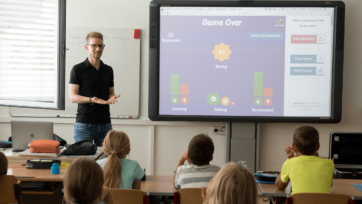IBL, PBL and PjBL, what’s the difference?

IBL, PBL and PjBL, what’s the difference?
Deciding on which educational resource to develop and the approach to take can be overwhelming. How do you know where to start in order to create a quality resource that will be valued by teachers?
You may have heard educators refer to “IBL, PBL and PjBL” when talking about current pedagogy in today’s classrooms. So, what do they actually mean and how are they different? This blog post will help you understand the differences between each approach so that you can get the most impact out of your next educational resource.
All three approaches are influenced by Piaget’s theory of constructivism, a student-centred approach to education involving active and authentic real-world learning, inquiry, personal experiences and collaboration.
1) Inquiry-based learning (IBL)
It all starts with a question. One essential question enables teachers to cover curriculum outcomes as well as inspire student curiosity and open conversation. IBL programs should be flexible where student responses lead to further questioning and informs the teacher of the direction the learning takes.
“Questions lie at the heart of inquiry.”
(Murdoch, 20117)
The focus of IBL is on the student learning process and development of deeper understanding. Students become investigators, accessing information through technology and experiences.
Suggested Resources;
- Teacher inquiry guide
- Virtual reality resources
- Video/animation resources
- Interactive resources
- Student directed websites
- Inquiry activity ideas
2) Problem-based learning (PBL)
Although similar to IBL, it is not the same. PBL calls for students to solve an authentic real-world problem through investigation. It encourages students to experience a learning process where they investigate, test, discover and repeat when necessary in order to find a viable solution.
“It empowers learners to conduct research, integrate theory and practice, and apply knowledge and skills to develop a viable solution to a defined problem,”
(John Savery, 2006)
PBL involves a collaborative approach to an open-ended problem with many possibilities of viable solutions. Students will have an opportunity to apply skills and knowledge from across the curriculum.
Suggested resources;
- PBL unit of work
- Student-directed website
- Video/animation resources
- Interactive resources
- Video conference lessons
3) Project-based learning (PjBL)
PjBL involves a long-term program where students work on real-world problems in order to produce a tangible product. It encourages students to design, problem-solve, think critically and investigate.
“It is designed to put students into a students-as-workers setting in which they can learn collaboration, critical-thinking, and written- and oral-communication skills along with the values of strong work ethic.”
(Pearlman qtd. in Boss, 2011)
Students are called to be active learners who take responsibility for self-managing their progress throughout the program.
Suggested resources;
- PjBL unit of work
- Student-directed website
- Video/animation resources
- Interactive resources
- Video conference lessons
Looking for a detailed explanation of IBL, PBL and PjBL? Contact us at hello@kimberlineducation.com.au to find out how we can support you in the best approach for your next education project.
References;
Boss, S. (2011). Project-Based Learning: What Experts Say. Available at: https://www.edutopia.org/project-based-learning-experts
Murdoch, K. (2010). An overview of the Integrated Inquiry Planning Model. Available at: https://static1.squarespace.com/static/55c7efeae4b0f5d2463be2d1/t/55ca9b43e4b0cf5cb3c4baa5/1439341379536/murdochmodelforinquiry2010.pdf
Savery, J. R. (2006). Overview of Problem-based Learning: Definitions and Distinctions. Interdisciplinary Journal of Problem-Based Learning, 1(1). Available at: https://doi.org/10.7771/1541-5015.1002




